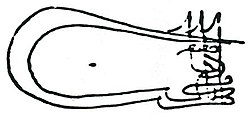Murad II was the sixth sultan of the Ottoman Empire reigning from 1421 to 1444 and later from 1446 to 1451. He was born in Edirne and has achieved much during his life as the Ottoman Sultan. Murad successfully portrayed himself as a very simple soldier. He didn’t used to join in the royal excesses but as a noble sultan who wants to strengthen the Muslim power against non Muslims. Through this very moderate self presentation, he successfully attained the support of the Muslims not only with in the Ottoman territories but outside it as well for himself and for his extensive and expensive campaigns.

Early Life:
Murad was born on June 1404 to Sultan Mehmed I. The identity of his mother is complicated to recognized. According to some historians, Murad’s mother was a concubine and many historians wrote that his mother was Şehzade Hatun the daughter of Divitdar Ahmed Pasha. According to other historians Murad’s mother was Emine Hatun who was the daughter of Şaban Suli Bey, ruler of the Dulkadirids. His early childhood was spent in Amasya and in the year 1410, Murad came with his father to Edirne the capital of Ottoman empire. When his father ascended to the throne, Murad was appointed the governor of the Amasya Sanjak. Murad remained as the governor of Amasya until the death of Mehmed I in 1421. He was then formally recognized as the sultan of the Ottoman empure at the age of only sixteen years. He was then girded with the sabre of Osman in Bursa and the soldiers and officers of the empire willingly paid tribute to him as their sovereign and sultan.

The First Reign:
Murad’s reign was early on remained very disturbed by insurrection. The Byzantine’s Emperor Manuel II, left the Mustafa from confinement and later introduced Mustafa as the legitimate successor of the throne of Bayezid I. If successful he had to repay him for his liberation by giving up a large number of important cities to the Byzantine empire. Many Turkish soldiers joined him and he defeated and killed the experienced general Beyazid Pasha sent by Murad to fight him. Mustafa defeated the Murad’s army in the battle and declared himself as the Sultan of Adrianople. Mustafa than crossed the Dardanelles and entered to Asia with a large number of troops but Murad not only out manoeuvered Mustafa but his forces passed over in large numbers to Murad. Mustafa than took hostage in the city of
Gallipoli, but the sultan besieged him there and given him the death penalty by the sultan. Murad later formed a new army called Azap in the year 1421 and went through the Byzantine Empire and sieged the Constantinople. Byzantines in reply having understanding with some independent Anatolian states and send them the Sultan’s brother Küçük Mustafa to rebel against the sultan. On this Murad had to abandon the siege of Constantinople to deal with his rebellious brother. He then caught him and executed him and the Anatolian states which had been constantly plotting against him were annexed and therefore became part of the Ottoman empire. Later Murad II started war against the Karamanid Emirate, Venice, Serbia and Hungary and defeated Karamanid Emirate and Venice in 1428 and 1432 respectively. In 1430s Murad captured vast territories in the Balkans and become successful in annexing Serbia in 1439. In the year 1441 the Holy Roman Empire and Poland joined the Serbian Hungarian coalition but few years later Murad won the Battle of Varna in 1444 against John Hunyadi.

The Second Reign:
In the year 1444 Murad II left his throne and hand it over to his son Mehmed II, but a Janissary revolt in the Empire forced him to return. He then continued his victories as was the case during the ist reign In 1448 he defeated the Christian coalition in the Second Battle of Kosovo. After securing the Balkans, He turned east to defeat Timur ‘s son, Shah Rokh. He further pushed his troops and defeated few but during the winter of 1450-51, he become ill and later died in Edirne. He was succeeded by his son Mehmed II and remained sultan for 30 years.
Achievements:
After his ascession to the throne, he sought to regain the Ottoman territories that were lost during the previous rules and had regained their autonomy following his grandfather Bayezid defeat in the Battle of Ankara in the year 1402 by Timur. In order to gain fame and international support for his victories, he modeled himself after the legendary Ghazi kings of old. After his accession he enhanced the translating and compiling activities where old Persian, Arab, and Anatolian epics were translated into Turkish. He also had this privilege of consolidating the Ottoman’s rule with in the Balkans. He went to seige Constantinople but couldn’t continued it as this grand Victory wasn’t written to his name. But he was a warrior and a good disciplined person and an intelligent ruler who continued with his imperial aporoach and consolidated the Ottomans during his rule.


